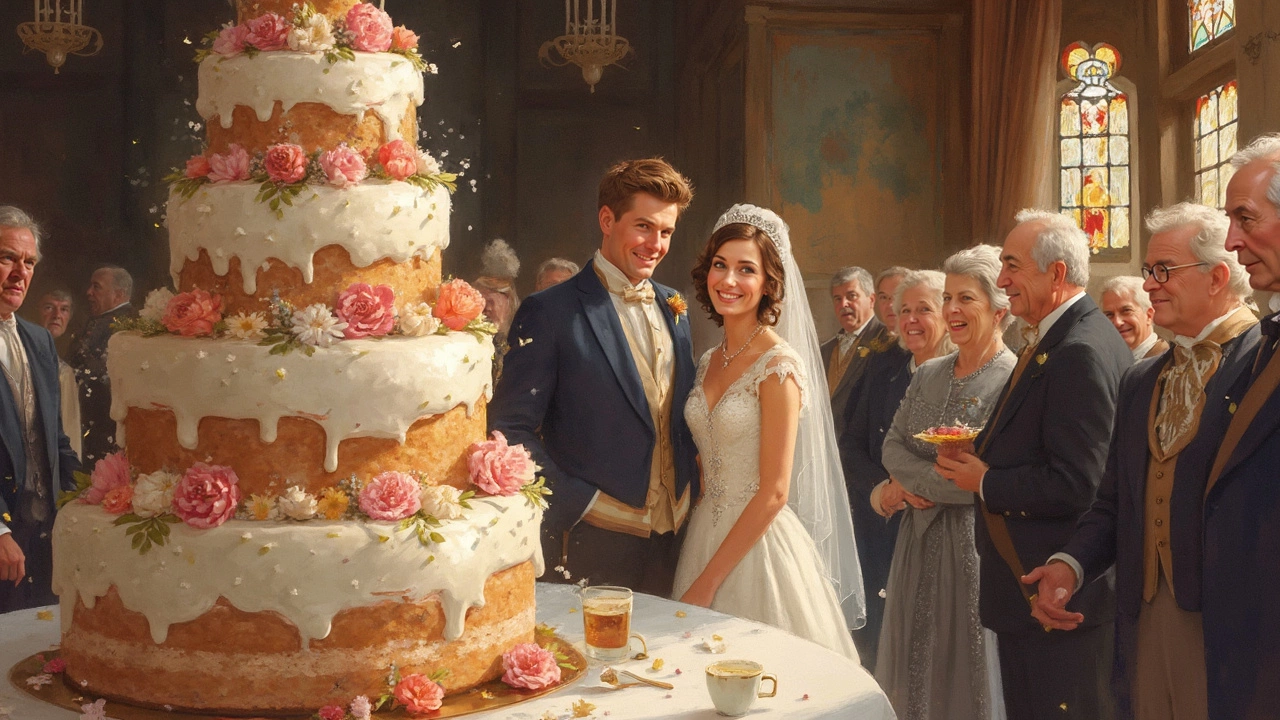Traditional Cake: What Makes a Wedding Cake Classic?
If you’ve ever wondered why white tiers and spongy layers keep showing up at weddings, you’re not alone. The traditional cake isn’t just a sweet treat; it’s a piece of history that has survived centuries. Below we break down where it started, which flavors still rule, and how you can add a modern touch without losing the classic vibe.
Where the Traditional Wedding Cake Came From
The first wedding cakes were simple fruit breads. In medieval Europe, couples shared a loaf of bread that was spiced and sweetened to celebrate the union. By the Victorian era, bakers started building multi‑layered cakes and decorating them with icing sugar to mimic the look of a marble sculpture. That’s when the iconic white frosting appeared – it symbolised purity and became a staple for royal weddings.
These early cakes were more about symbolism than taste. Over time, sugar became cheaper and cake recipes got richer. That’s why today’s classic cake often includes butter, eggs, and vanilla – ingredients that weren’t widely available back then.
Classic Flavors That Still Win
Even with a hundred years of culinary evolution, a few flavors stay at the top of the list. Vanilla sponge is the go‑to base because it’s light, flexible, and lets frosting shine. Chocolate is the second favorite for couples who want a deeper taste without straying too far from tradition.
Fruitcake, especially the dense, spiced version, still appears at many British‑style weddings. It’s not as popular in the UK as it used to be, but some families keep it as a nod to their heritage. If you love fruit but want something lighter, consider a mixed‑berry filling between the layers – it adds freshness while keeping the classic look.
When you choose a flavor, think about the overall menu. A rich chocolate cake can overwhelm a heavy dinner, while a light lemon or almond sponge can balance bold appetizers. Pairing the cake with the right frosting also matters – buttercream, fondant, or whipped cream each give a different texture and sweetness level.
Adding a Modern Twist Without Losing Tradition
Modern couples love personalising every detail, and the cake is no exception. You can keep the classic white tiers and simply swap the interior filling. Red velvet, salted caramel, or even matcha paste add surprise without changing the visual impact.
Another easy update is the decoration. Instead of traditional sugar roses, try fresh flowers that match your bridal bouquet. Edible gold leaf, minimal geometric patterns, or a single bold ribbon can give the cake a contemporary feel while preserving its timeless shape.
If you’re on a tighter budget, consider a “naked” cake. It shows the layers and fillings, which makes it look rustic and stylish. You still get the multi‑layer look, but you save on expensive fondant covering.
Finally, think about portion sizes. Many couples now opt for a small display cake for photos and a larger sheet cake for guests. This way you get the Instagram‑worthy traditional design and keep costs manageable.
Bottom line: a traditional wedding cake doesn’t have to be boring. By understanding its history, picking a classic flavor you love, and adding a few modern details, you can serve a dessert that feels both timeless and personal. Whether you go for a simple vanilla tier or a bold chocolate‑raspberry combo, the cake will be a sweet centerpiece that ties your whole day together.
Traditional Wedding Cake Flavor: Classic Choices and Why They Endure
Curious about the classic flavor behind traditional wedding cakes? This article digs into why fruitcake became the go-to for generations, how it holds up against today’s sweet trends, and what flavor options still count as 'classic.' Expect practical tips, a quick look at traditions worldwide, and help deciding if the traditional path suits your own wedding. We’re skipping the waffle and jumping straight into the most delicious facts and advice.
View More